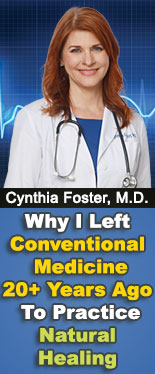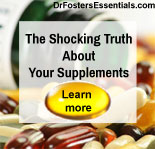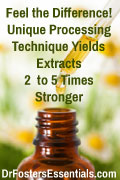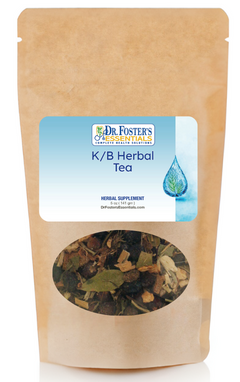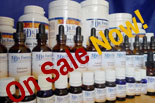
1:
Eur J Neurosci 2000 Jun;12(6):1882-90, Bastianetto S, Ramassamy
C, Dore S, Christen Y, Poirier J, Quirion R., Douglas Hospital Research
Centre, Department of Psychiatry, McGill University, 6875 Bld LaSalle,
Verdun, Quebec, Canada. The Ginkgo biloba extract (EGb 761) protects
hippocampal neurons against cell death induced by beta-amyloid.
2: J Pharmacol Exp Ther 2000 Jun;293(3):982-8, Zhou LJ, Zhu
XZ., Department of Pharmacology, Shanghai Institute of Materia Medica,
Chinese Academy of Sciences. Reactive oxygen species-induced
apoptosis in PC12 cells and protective effect of bilobalide.
3: Int J Neuropsychopharmacol 2001 Jun;4(2):131-4, Stough
C, Clarke J, Lloyd J, Nathan PJ., Neuropsychology Laboratory (BSEE),
Swinburne University of Technology, Melbourne, Australia. cstough@swin.edu.au,
Neuropsychological changes after 30-day Ginkgo biloba administration
in healthy participants.
4: Phytomedicine 2000 Jan;6(6):393-40, Wettstein A., Stadtarztlicher
Dienst, Zurich. albert.wettstein@gud.stzh.ch, Cholinesterase
inhibitors and Gingko extracts--are they comparable in the treatment
of dementia? Comparison of published placebo-controlled efficacy
studies of at least six months' duration.
5: Dement Geriatr Cogn Disord 2000 Jul-Aug;11(4):230-7, Le
Bars PL, Kieser M, Itil KZ. Memory Centers of America Inc., New
York, NY, USA. info@mcai.com, A 26-week analysis of a double-blind,
placebo-controlled trial of the ginkgo biloba extract EGb 761 in
dementia.
6: Presse Med 1986 Sep 25;15(31):1562-4, Meyer B., France,
Multicenter randomized double-blind drug vs. placebo study of
the treatment of tinnitus with Ginkgo biloba extract.
7: Int J Tissue React 1995;17(3):93-100, Droy-Lefaix MT,
Cluzel J, Menerath JM, Bonhomme B, Doly M., Department of Pharmacology,
Institut IPSEN, Paris, France. Antioxidant effect of a Ginkgo
biloba extract (EGb 761) on the retina.
8: Acta Ophthalmol (Copenh) 1993 Oct;71(5):623-8, Apaydin
C, Oguz Y, Agar A, Yargicoglu P, Demir N, Aksu G. Department of
Ophthalmology, Akdeniz University Medical Faculty, Antalya, Turkey.
Visual evoked potentials and optic nerve histopathology in normal
and diabetic rats and effect of ginkgo biloba extract.
9: Thromb Res 1998 Jul 1;91(1):33-8, Kim YS, Pyo MK, Park
KM, Park PH, Hahn BS, Wu SJ, Yun-Choi HS. Natural Products Research
Institute, Seoul National University, Korea. Antiplatelet and
antithrombotic effects of a combination of ticlopidine and ginkgo
biloba ext (EGb 761).
10: Arzneimittelforschung 1999 Nov;49(11):900-4, Schweizer
J, Hautmann C., Krankenhaus Dresden-Friedrichstadt, Dresden, Germany.
Comparison of two dosages of ginkgo biloba extract EGb 761 in
patients with peripheral arterial occlusive disease Fontaine's stage
IIb. A randomised, double-blind, multicentric clinical trial.
11: Vasa 1998 May;27(2):106-10, Peters H, Kieser M, Holscher
U., GmbH & Co., Karlsruhe. Germany. Demonstration of
the efficacy of ginkgo biloba special extract EGb 761 on intermittent
claudication--a placebo-controlled, double-blind multicenter trial.
12: Yakugaku Zasshi 1993 Oct;113(10):718-24, Kobayashi N,
Suzuki R, Koide C, Suzuki T, Matsuda H, Kubo M. KOSE Corporation,
Tokyo, Japan. Effect of leaves of Ginkgo biloba on hair regrowth
in C3H strain mice.
13: J Sex Marital Ther 1998 Apr-Jun;24(2):139-43, Cohen AJ,
Bartlik B., University of California, San Francisco, California,
USA., Ginkgo biloba for antidepressant-induced sexual dysfunction.
14: Fitoterapia 2001 Dec;72(8):922-6. Dhawan K, Kumar S,
Sharma A., Pharmacognosy Division, University Institute of Pharmaceutical
Sciences Panjab University, Chandigarh 160014, India. kdd@glide.net.in,
Anxiolytic activity of aerial and underground parts of Passiflora
incarnata.
15: Fitoterapia 2001 Aug;72(6):698-702. Dhawan K, Kumar S,
Sharma A. Pharmacognosy Division, University Institute of Pharmaceutical
Sciences, Panjab University, Chandigarh 160014, India. Comparative
biological activity study on Passiflora incarnata and P. edulis.
16: J Clin Pharm Ther 2001 Oct;26(5):369-73. Akhondzadeh
S, Kashani L, Mobaseri M, Hosseini SH, Nikzad S, Khani M., Roozbeh
Psychiatric Hospital, Tehran University of Medical Sciences, South
Kargar Avenue, Tehran 13334, Iran. s.akhond@neda.net, Passionflower
in the treatment of opiates withdrawal: a double-blind randomized
controlled trial.
17: J Clin Pharm Ther 2001 Oct;26(5):363-7. Akhondzadeh
S, Naghavi HR, Vazirian M, Shayeganpour A, Rashidi H, Khani M.
Roozbeh Psychiatric Hospital, Tehran University of Medical Sciences,
South Kargar Avenue, Tehran, Iran. s.akhond@neda.net, Passionflower
in the treatment of generalized anxiety: a pilot double-blind randomized
controlled trial with oxazepam.
18. Phytotherapy Research, Vol. 11, 395-397 (1997), M. Girzu,
A. Carnat, A.M. Privat, J. Fialip, A.P. Carnat, J. L. Lamaison,
Laboratoire de Pharmacognosie et Phytotherapie, Clermont-Ferrand,
France, Sedative Activity in Mice of a Hydroalcohol Extract of
Hypericum perforatum L.
19: Int Clin Psychopharmacol 2001 Sep;16(5):239-52. Whiskey
E, Werneke U, Taylor D., Pharmacy Department, Maudsley Hospital,
London, UK. A systematic review and meta-analysis of Hypericum
perforatum in depression: a comprehensive clinical review.
20: Ann Intern Med 2002 Jan 1;136(1):42-53. Ernst E., The
Risk-Benefit Profile of Commonly Used Herbal Therapies: Ginkgo,
St. John's Wort, Ginseng, Echinacea, Saw Palmetto, and Kava.
21:Pharmacopsychiatry2001 Jul;34 Suppl 1:S127-33. Schule
C, Baghai T, Ferrera A, Laakmann G., Department of Psychiatry, University
of Munich, Germany. Neuroendocrine effects of Hypericum extract
WS 5570 in 12 healthy male volunteers.
22: Zhongguo Zhong Xi Yi Jie He Za Zhi 1992 Feb;12(2):95-8,
70. Pharmacologic studies of antimotion sickness actions of ginger.
23: J Ethnopharmacol 1990 Jul;29(3):267-73. Mustafa
T, Srivastava KC. Institute of Biology, Odense University, Denmark.
Ginger (Zingiber officinale) in migraine headache.
24: Phytotherapy Research, Vol. 10 (1996), Indu Sharma, Deepali
Gusain, and V.P. Dixit, University of Rahjasthan, Jaipur, India,
Hypolipidaemic and Antiatherosclerotic Effect of Zingiber officinale
in Cholesterol Fed Rabbits.
25: Int J Food Sci Nutr 1996 Jan;47(1):55-9. Platel K, Srinivasan
K., Department of Biochemistry & Nutrition, Central Food Technological
Research Institute, Mysore, India. Influence of dietary spices
or their active principles on digestive enzymes of small intestinal
mucosa in rats.
26: Phytotherapy Research, Vol. 10 (1996), M. Ira Thabrew
and Robin D. Hughes, King's College School of Medicine and Dentistry,
London, UK, Phytogenic Agents in the Therapy of Liver Disease.
27: Phytotherapy Research, Vol. 10, S25-S26 (1996), Madaus
AG, Koln, Germany, Properties and Medical Use of Flavonolignans
(Silymarin) from Silybum marianum, E. Leng-Peschlow.
28: Int J Clin Pharmacol Ther Toxicol 1993 Sep;31(9):456-60.
Buzzelli G, Moscarella S, Giusti A, Duchini A, Marena C, Lampertico
M. Istituto di Clinica Medica II, Universita degli Studi di Firenze,
Italy. A pilot study on the liver protective effect of
silybin-phosphatidylcholine complex (IdB1016) in chronic active
hepatitis.
29: Orv Hetil 2000 Jul 23;141(30):1655-9. Par A, Roth E,
Rumi G Jr, Kovacs Z, Nemes J, Mozsik G. Pecsi Tudomanyegyetem, Altalanos
Orvostudomanyi Kar, I. Belgyogyaszati Klinika, Hungary.
Oxidative stress and antioxidant defense in alcoholic liver disease
and chronic hepatitis C.
30: Scand J Gastroenterol Suppl 1998;228:38-46, Feher J,
Lengyel G, Blazovics A. National Institute of Internal Medicine,
2nd Dept. of Medicine, Semmelweis University, Budapest, Hungary.
FEHER@bel2.sote.hu, Oxidative stress in the liver and biliary
tract diseases.
31: Minerva Anestesiol 1996 May;62(5):187-93. Carducci R,
Armellino MF, Volpe C, Basile G, Caso N, Apicella A, Basile V.
Cattedra di Tossicologia Ospedale A. Cardarelli, Universita degli
Studi di Napoli Federico II, Italy, Silibinin and acute poisoning
with Amanita phalloides.
32: Toxicol Appl Pharmacol 1984 May;73(3):355-62, Vogel G,
Tuchweber B, Trost W, Mengs U.
Protection by silibinin against Amanita phalloides intoxication
in beagles.
33: J Hepatol 1989 Jul;9(1):105-13 Ferenci P, Dragosics B,
Dittrich H, Frank H, Benda L, Lochs H, Meryn S, Base W, Schneider
B. 1st Department of Gastroenterology and Hepatology, University
of Vienna, Austria. Randomized controlled trial of silymarin
treatment in patients with cirrhosis of the liver.
34: Toxicology 1989 Aug;57(3):267-86, Davila JC, Lenherr
A, Acosta D. Department of Pharmacology and Toxicology, College
of Pharmacy, University of Texas, Austin 78712. Protective effect
of flavonoids on drug-induced hepatotoxicity in vitro.
35: Skin Pharmacol 1995;8(6):279-91, Shear NH, Malkiewicz
IM, Klein D, Koren G, Randor S, Neuman MG. Division of Dermatology,
Sunnybrook Health Science Centre, Ont., Canada. Acetaminophen-induced
toxicity to human epidermoid cell line A431 and hepatoblastoma cell
line Hep G2, in vitro, is diminished by silymarin.
36: Acta Gastroenterol Belg 2000 Oct-Dec;63(4):366-70.
Schuppan D, Koda M, Bauer M, Hahn EG., Medizinische Klinik I, Friedrich-Alexander-Universitat
Erlangen-Nurnberg, Germany.
Fibrosis of liver, pancreas and intestine: common mechanisms
and clear targets?
37. Phytotherapy Research, Vol. 11, 558-563 (1997), Therabel
Research S. A., Brussels, Belgium,Efficacy and Safety of
the Extract of Serenoa repens in the Treatment of Benign
Prostatic Hyperplasia: Therapeutic Equivalence Between Twice and
Once Daily Dosage Forms.
38: J Forensic Sci 2001 May;46(3):502-9, Reilly CA, Crouch
DJ, Yost GS. Center for Human Toxicology, Department of Pharmacology
and Toxicology, University of Utah, Salt Lake City 84112, USA. Quantitative
analysis of capsaicinoids in fresh peppers, oleoresin capsicum and
pepper spray products.
39: Prostaglandins Leukot Essent Fatty Acids 2000 Feb;62(2):107-10,
Shobana S, Naidu KA. Department of Biochemistry and Nutrition, Central
Food Technological Research Institute, Mysore, India. Antioxidant
activity of selected Indian spices.
40: Phytother Res 2001 Aug;15(5):391-4, Tolan I, Ragoobirsingh
D, Morrison EY. Department of Basic Medical Sciences (Biochemistry),
University of the West Indies, Mona, Kingston 7, Jamaica.
The effect of capsaicin on blood glucose, plasma insulin levels
and insulin binding in dog models.
Capsicum frutescens has been used to treat diabetes mellitus by
traditional healers in Jamaica. In conclusion it can be stated that
capsaicin is responsible for the hypoglycaemic episodes seen in
the dogs and that it also causes an increase in insulin secretion
which leads to a reduction of insulin binding on the insulin receptors.
41: Onkologie, 10 (3Suppl):27-33 1987 Jun, E.G. Coeugniet,
E. Elek, Immunomodulation with Viscum album and Echinacea
purpurea extracts.
42: Immunopharmacology, 35(3):229-35 1997 Jan, D.M.
See, N. Broumand, L. Sahl, J.G. Tilles, U.C. Irvine Medical Center,
Orange California, In vitro Effects of Echinacea and Ginseng
on Natural Killer and Antibody-dependent Cell Cytotoxicity in Healthy
Subjects and Chronic Fatigue Syndrome or Acquired Immunodeficiency
Syndrome Patients.
43: Phytotherapy Research, Vol. 11, 507-511 (1998), S. Axarlis,
A. Mentis, C. Demetzos, S. Mitaku, A.L. Skaltsounis, M. Marselos,
and M. Malamas, Hellenic Pasteur Institute, Athens, Greece, Antiviral
In vitro Activity of Hypericum perforatum L. Extract on the
Human Cytomegalovirus (HCMV).
44: Phytotherapy Research, Vol. 10, S195-198 (1996), G. Siegel,
U. Casper, F. Schnalke, R. Hetzer, Free University of Berlin, Berlin,
Germany, Molecular Physiological Effector Mechanisms of Hawthorn
Extract in Cardiac Papillary Muscle and Coronary Vascular Smooth
Muscle.
45: Biosci Biotechnol Biochem 1999 Dec;63(12):2118-22, Asai
A, Nakagawa K, Miyazawa T. Laboratory of Biodynamic Chemistry, Tohoku
University Graduate School of Agriculture, Sendai, Japan. asai@biochem.tohoku.ac.jp,
Antioxidative effects of turmeric, rosemary and capsicum extracts
on membrane phospholipid peroxidation and liver lipid metabolism
in mice.
46: Med Sci Sports Exerc 1997 Mar;29(3):355-6, Lim K, Yoshioka
M, Kikuzato S, Kiyonaga A, Tanaka H, Shindo M, Suzuki M. Department
of Athletics, School of Art & Sports Sciences, University of
Inchon, REPUBLIC OF KOREA. Dietary red pepper ingestion increases
carbohydrate oxidation at rest and during exercise in runners.
47: Dig Dis Sci 1995 Mar;40(3):580-3, Yeoh KG, Kang JY, Yap
I, Guan R, Tan CC, Wee A, Teng CH. Department of Medicine, National
University Hospital, Singapore. Chili protects against aspirin-induced
gastroduodenal mucosal injury in humans. randomized controlled
trial, tested by endoscopy 6 hours after aspirin adminstration.
18 healthy volunteers.
48: Dig Dis Sci 1995 Mar;40(3):576-9, Kang JY, Yeoh KG, Chia HP,
Lee HP, Chia YW, Guan R, Yap I. Department of Medicine, National
University of Singapore. Chili--protective factor against peptic
ulcer? ulcer group vs. healthy group. Cayenne consumption
was 4 times higher in the healthy group.chili has a protective effect
against peptic ulcer.
49: Zhongguo Yao Li Xue Bao 1999 Oct;20(10):912-6, Zhou FW, Li YJ,
Deng HW., Department of Pharmacology, Hunan Medical University,
Changsha 410078, China. Early and delayed protection by capsaicin
against reperfusion injury in rat hearts. RESULTS: Capsaicin
(50 mg.kg-1, s.c.) improved the recovery of cardiac function and
decreased the release of CK (creatine kinase) CONCLUSION: Pretreatment
with capsaicin induces the early and delayed cardioprotection, which
may be related to stimulation of CGRP release in the rat.
50: J Vet Med Sci 2001 May;63(5):499-503, Yeon D, Kwon S, Lee Y,
Leem J, Nam T, Ahn D. Department of Physiology, Yonsei University
College of Medicine, Seoul, Korea. Capsaicin-induced relaxation
in rabbit coronary artery. These results indicate that capsaicin
may have a direct relaxing effect on the smooth muscle contractility,
and relaxation may be due to activation of the 4-AP-sensitive, delayed
rectifier K+ channels in the rabbit coronary artery.
51: Acta Physiol Scand 1989 Aug;136(4):575-80, Franco-Cereceda A,
Rudehill A. Department of Pharmacology, Karolinska Institute, Stockholm,
Sweden. Capsaicin-induced vasodilatation of human coronary arteries
in vitro is mediated by calcitonin gene-related peptide rather than
substance P or neurokinin A. Application of Capsaicin
to the coronary artery evoked a relaxation of the potassium-pre-contracted
human coronary arteries.
52: Clin J Pain 1998 Jun;14(2):97-106, Hautkappe M, Roizen
MF, Toledano A, Roth S, Jeffries JA, Ostermeier AM. Department of
Anesthesia and Critical Care, the University of Chicago, Illinois
60637, USA. Review of the effectiveness of capsaicin for painful
cutaneous disorders and neural dysfunction. CONCLUSIONS: Capsaicin
is effective for psoriasis, pruritus, and cluster headache; it is
often helpful for the itching and pain of postmastectomy pain syndrome,
oral mucositis, cutaneous allergy, loin pain/hematuria syndrome,
neck pain, amputation stump pain, and skin tumor; and it may be
beneficial for neural dysfunction (detrusor hyperreflexia, reflex
sympathetic dystrophy, and rhinopathy).
53: Cephalalgia 1993 Apr;13(2):114-6, Marks DR, Rapoport A, Padla
D, Weeks R, Rosum R, Sheftell F, Arrowsmith F. A double-blind
placebo-controlled trial of intranasal capsaicin for cluster headache.
Patients in acute cluster were randomized to receive either
capsaicin or placebo in the ipsilateral nostril for 7 days. Patients
recorded the severity of each headache for 15 days. Headaches on
days 8-15 of the study were significantly less severe in the capsaicin
group vs the placebo group.
54: Cancer Lett 2001 Apr 26;165(2):139-45, Jung MY, Kang
HJ, Moon A. College of Pharmacy, Duksung Women's University, 419
Ssangmun-Dong, Tobong-Ku, 132-714, Seoul, South Korea.
Capsaicin-induced apoptosis in SK-Hep-1 hepatocarcinoma cells
involves Bcl-2 downregulation and caspase-3 activation. Korean
researchers found that capsaicin caused cancerous liver cells (hepatocarcinoma
cells) to die through a process called apoptosis. They believed
that red pepper could be useful as a preventative agent for liver
cancer.
55: J Agric Food Chem 2001 Feb;49(2):622-7, Yamauchi R, Aizawa
K, Inakuma T, Kato K. Department of Bioprocessing, Faculty of Agriculture,
Gifu University, 1-1 Yanagido, Gifu City, Gifu 501-1193, Japan.
yamautir@cc.gifu-u.ac.jp, Analysis of molecular species of glycolipids
in fruit pastes of red bell pepper (Capsicum annuum L.) by high-performance
liquid chromatography-mass spectrometry.
56: Biofactors 2000;12(1-4):107-12, Surh YJ, Han SS, Keum
YS, Seo HJ, Lee SS., College of Pharmacy, Seoul National University,
Kwanak-gu, Korea. surh@plaza.snu.ac.kr, Inhibitory effects of
curcumin and capsaicin on phorbol ester-induced activation of eukaryotic
transcription factors, NF-kappaB and AP-1.
57: Mol Plant Microbe Interact 2001 Jan;14(1):80-5, Kim YS,
Lee HH, Ko MK, Song CE, Bae CY, Lee YH, Oh BJ. Kumho Life
and Environmental Science Laboratory, Korea Kumho Patrochemical
Co. Ltd, Puk-gu, Kwangju. Inhibition of fungal appressorium
formation by pepper (Capsicum annuum) esterase.
58: J Agric Food Chem 2000 May;48(5):1713-20, Howard LR,
Talcott ST, Brenes CH, Villalon B. Department of Food Science, University
of Arkansas, Fayetteville, Arkansas 72704, USA. Changes in phytochemical
and antioxidant activity of selected pepper cultivars (Capsicum
species) as influenced by maturity.
59: New England Journal of Medicine, 227, 128-133, 1942.
Thurman, F.M. The treatment of psoriasis with sarsaparilla compound.
60: J Ethnopharmacol 2002 Apr;80(1):85-90, Milkowska-Leyck
K, Filipek B, Strzelecka H. Department of Pharmacognosy, Faculty
of Pharmacy, Medical Academia, 02097, Warsaw, Poland. Pharmacological
effects of lavandulifolioside from Leonurus cardiaca.
61: Am J Med Sci 1997 Jul;314(1):37-40, Barri YM, Wingo CS.
Division of Nephrology, University of Arkansas for Medical Sciences,
Little Rock, USA. The effects of potassium depletion and
supplementation on blood pressure: a clinical review.
62: J Steroid Biochem Mol Biol 2001 Sep;78(3):291-8.
Tamir S, Eizenberg M, Somjen D, Izrael S, Vaya J. Laboratory of
Natural Compounds for Medicinal Use, Migal-Galilee Technological
Center, 10200, Kiryat Shmona, Israel. Estrogen-like activity
of glabrene and other constituents isolated from licorice root.
63: Reproduction 2002 Feb;123(2):235-42. Milligan S,
Kalita J, Pocock V, Heyerick A, De Cooman L, Rong H, De Keukeleire
D. Endocrinology and Reproduction Research Group, School of Biomedical
Sciences, King's College, Guy's Campus, London SE1 1UL, UK. Stuart.Milligan@kcl.ac.uk,
Oestrogenic activity of the hop phyto-oestrogen, 8-prenylnaringenin.
64: J Ethnopharmacol 2000 Nov;73(1-2):233-4. Otero R, Nunez
V, Barona J, Fonnegra R, Jimenez SL, Osorio RG, Saldarriaga M, Diaz
A. Programa de Ofidismo, Facultad de Medicina, Universidad
de Antioquia, A.A. 1226, Medellin, Colombia. rotero@catios.udea.edu.co
Snakebites and ethnobotany in the northwest region of Colombia.
Part III: neutralization of the haemorrhagic effect of Bothrops
atrox venom.
65: Prev Cardiol 2000 Winter;3(1):24-32, Fugh-Berman A.
George Washington University School of Medicine, Department of Health
Care Sciences, Washington, DC 20037, Herbs and dietary supplements
in the prevention and treatment of cardiovascular disease.
66: Arzneimittelforschung 2001 Oct;51(10):793-8, Rietbrock
N, Hamel M, Hempel B, Mitrovic V, Schmidt T, Wolf GK. Institut fur
Klinische Pharmakologie der Johann Wolfgang Goethe-Universitat Frankfurt,
Frankfurt/Main. Article in German. [Actions of standardized
extracts of Crataegus berries on exercise tolerance and quality
of life in patients with congestive heart failure]
67:(Herz1999 Oct;24(6):465-74; discussion 475. Tauchert
M, Gildor A, Lipinski J. Klinikum Leverkusen. . tauchert@klinikumvlev.de
Article in German [High-dose Crataegus extract WS 1442
in the treatment of NYHA stage II heart failure]
68: Arzneimittelforschung 1992 Apr;42(4):547-51. Breu W, Hagenlocher
M, Redl K, Tittel G, Stadler F, Wagner H. Institut fur Pharmazeutische
Biologie, Ludwig-Maximilians-Universitat Munchen. [Anti-inflammatory
activity of sabal fruit extracts prepared with supercritical carbon
dioxide. In vitro antagonists of cyclooxygenase and 5-lipoxygenase
metabolism]
69: Biol Pharm Bull 2001 Feb;24(2):188-90. Ishii K,
Usui S, Sugimura Y, Yamamoto H, Yoshikawa K, Hiran K. Laboratory
of Pharmaceutics, Gifu Pharmaceutical University, Japan.
Extract from Serenoa repens suppresses the invasion activity of
human urological cancer cells by inhibiting urokinase-type plasminogen
activator.
70: Biochem Cell Biol. 1990 Dec;68(12):1344-51. Noble RL. The discovery of the vinca alkaloids--chemotherapeutic agents against cancer.
71: Braz J Infect Dis. 2007 Apr;11(2):234-6. Senhaji O, Faid M, Kalalou I. Inactivation of Escherichia coli O157:H7 by essential oil from Cinnamomum zeylanicum.
72: J Agric Food Chem. 2007 Jul 11;55(14):5484-90. Epub 2007 Jun 13. Shan B, Cai YZ, Brooks JD, Corke H.
Antibacterial properties and major bioactive components of cinnamon stick (Cinnamomum burmannii): activity against foodborne pathogenic bacteria.
73: Water Res. 2007 Jul 14; Chang CW, Chang WL, Chang ST, Cheng SS. Antibacterial activities of plant essential oils against Legionella pneumophila.
74: BMC Complement Altern Med. 2006 Nov 30;6:39. Prabuseenivasan S, Jayakumar M, Ignacimuthu S. In vitro antibacterial activity of some plant essential oils.
75: Int J Food Microbiol. 2006 Mar 15;107(2):180-5. Epub 2005 Nov 2. Matan N, Rimkeeree H, Mawson AJ, Chompreeda P, Haruthaithanasan V, Parker M. Antimicrobial activity of cinnamon and clove oils under modified atmosphere conditions.
76: Int J Parasitol. 2005 Dec;35(14):1595-600. Epub 2005 Sep Yang YC, Lee HS, Lee SH, Clark JM, Ahn YJ. Ovicidal and adulticidal activities of Cinnamomum zeylanicum bark essential oil compounds and related compounds against Pediculus humanus capitis (Anoplura: Pediculicidae).
77: Phytother Res. 2004 Sep;18(9):713-7. Simic A, Sokovic MD, Ristic M, Grujic-Jovanovic S, Vukojevic J, Marin PD. The chemical composition of some Lauraceae essential oils and their antifungal activities.
78: J Agric Food Chem. 2004 Sep 22;52(19):6042-8. Friedman M, Henika PR, Levin CE, Mandrell RE. Antibacterial activities of plant essential oils and their components against Escherichia coli O157:H7 and Salmonella enterica in apple juice.
79: J Food Prot. 2002 Oct;65(10):1545-60.Friedman M, Henika PR, Mandrell RE. Bactericidal activities of plant essential oils and some of their isolated constituents against Campylobacter jejuni, Escherichia coli, Listeria monocytogenes, and Salmonella enterica.
80: Allergy. 1995 Dec;50(12):995-9. Singh HB, Srivastava M, Singh AB, Srivastava AK. Cinnamon bark oil, a potent fungitoxicant against fungi causing respiratory tract mycoses.
81: Singapore Med J. 2006 Oct;47(10):858-63. Kannappan S, Jayaraman T, Rajasekar P, Ravichandran MK, Anuradha CV. Cinnamon bark extract improves glucose metabolism and lipid profile in the fructose-fed rat.
82: Diabetes Obes Metab. 2007 Nov;9(6):895-901. Solomon TP, Blannin AK. Effects of short-term cinnamon ingestion on in vivo glucose tolerance.
83: J Ethnopharmacol. 1980 Dec;2(4):337-44. Albert-Puleo M. Fennel and anise as estrogenic agents.
84: Phytomedicine. 2003;10(6-7):455-8. Javidnia K, Dastgheib L, Mohammadi Samani S, Nasiri A. Antihirsutism activity of Fennel (fruits of Foeniculum vulgare) extract. A double-blind placebo controlled study.
85: J Agric Food Chem. 2004 Dec 29;52(26):8255-60.Dadalioglu I, Evrendilek GA. Chemical compositions and antibacterial effects of essential oils of Turkish oregano (Origanum minutiflorum), bay laurel (Laurus nobilis), Spanish lavender (Lavandula stoechas L.), and fennel (Foeniculum vulgare) on common foodborne pathogens.
86: Arch Pharm Res. 2002 Dec;25(6):860-4. Aridoðan BC, Baydar H, Kaya S, Demirci M, Ozbaþar D, Mumcu E. Antimicrobial activity and chemical composition of some essential oils.
87: Pharmazie. 2004 Jul;59(7):561-4. Boskabady MH, Khatami A, Nazari A. Possible mechanism(s) for relaxant effects of Foeniculum vulgare on guinea pig tracheal chains.
88: Fitoterapia. 2003 Apr;74(3):317-9. Ozbek H, Uğraş S, Dülger H, Bayram I, Tuncer I, Oztürk G, Oztürk A. Hepatoprotective effect of Foeniculum vulgare essential oil.
89: Int J Food Sci Nutr. 2005 Sep;56(6):399-414. Review. Srinivasan K. Plant foods in the management of diabetes mellitus: spices as beneficial antidiabetic food adjuncts.
90: Indian J Exp Biol. 2004 Sep;42(9):909-12. Lal AA, Kumar T, Murthy PB, Pillai KS. Hypolipidemic effect of Coriandrum sativum L. in triton-induced hyperlipidemic rats.
91: Nahrung. 2003 Dec;47(6):408-12. Ramakrishna Rao R, Platel K, Srinivasan K. In vitro influence of spices and spice-active principles on digestive enzymes of rat pancreas and small intestine.
92: Br J Nutr. 1999 Mar;81(3):203-9. Gray AM, Flatt PR. Insulin-releasing and insulin-like activity of the traditional anti-diabetic plant Coriandrum sativum (coriander).
93: Plant Foods Hum Nutr. 1997;51(2):167-72. Chithra V, Leelamma S. Hypolipidemic effect of coriander seeds (Coriandrum sativum): mechanism of action.
94: Diabetologia. 1990 Aug;33(8):462-4. Swanston-Flatt SK, Day C, Bailey CJ, Flatt PR. Traditional plant treatments for diabetes. Studies in normal and streptozotocin diabetic mice.
95: Postgrad Med. 2009 Mar;121(2):114-8. Baron, M. Rapid Medical Research Inc., Cleveland, OH. A patented strain of Bacillus coagulans increased immune response to viral challenge.
96: Zhong Xi Yi Jie He Xue Bao. 2010 Apr;8(4):341-6. Sun W, Yu J, Shi YM, Zhang H, Wang Y, Wu BB. [Effects of Cordyceps extract on
cytokines and transcription factors in peripheral blood mononuclear cells of
asthmatic children during remission stage.] Chinese.
97: Korean J Physiol Pharmacol.
2009 Feb;13(1):49-54. Park BT, Na KH, Jung EC, Park JW, Kim HH. Antifungal and Anticancer Activities
of a Protein from the Mushroom Cordyceps militaris. Epub 2009 Feb 28. PubMed PMID: 19885026; PubMed Central
PMCID: PMC2766723.
98: Cell Prolif. 2009 Dec;42(6):838-47. Chen Y, Guo H, Du Z, Liu XZ, Che Y, Ye X. Ecology-based screen identifies new metabolites from a Cordyceps-colonizing fungus as cancer cell proliferation inhibitors and apoptosis inducers. Epub 2009 Aug 11. PubMed PMID: 19673894.
99:J Microbiol Biotechnol. 2008
Dec;18(12):1997-2003. Jin CY, Kim GY, Choi YH. Induction of apoptosis by aqueous extract of Cordyceps militaris through activation of caspases and inactivation of Akt in human breast cancer MDA-MB-231 Cells. PubMed PMID: 19131705.
100: Rheumatology (Oxford). 2009 Jan;48(1):45-8. Noh EM, Kim JS, Hur H, Park BH, Song EK, Han MK, Kwon KB, Yoo WH, Shim IK, Lee SJ, Youn HJ, Lee YR. Cordycepin inhibits IL-1beta-induced MMP-1 and MMP-3 expression in rheumatoid arthritis synovial fibroblasts. PubMed PMID: 19056796.
101: J. Agric. Food Chem., July 2, 2010 (Article); DOI: 10.1021/jf100716t. Smita Gautam, Kalpana Platel, Krishnapura Srinivasan. “Higher Bioaccessibility of Iron and Zinc from Food Grains in the Presence of Garlic and Onion.”



